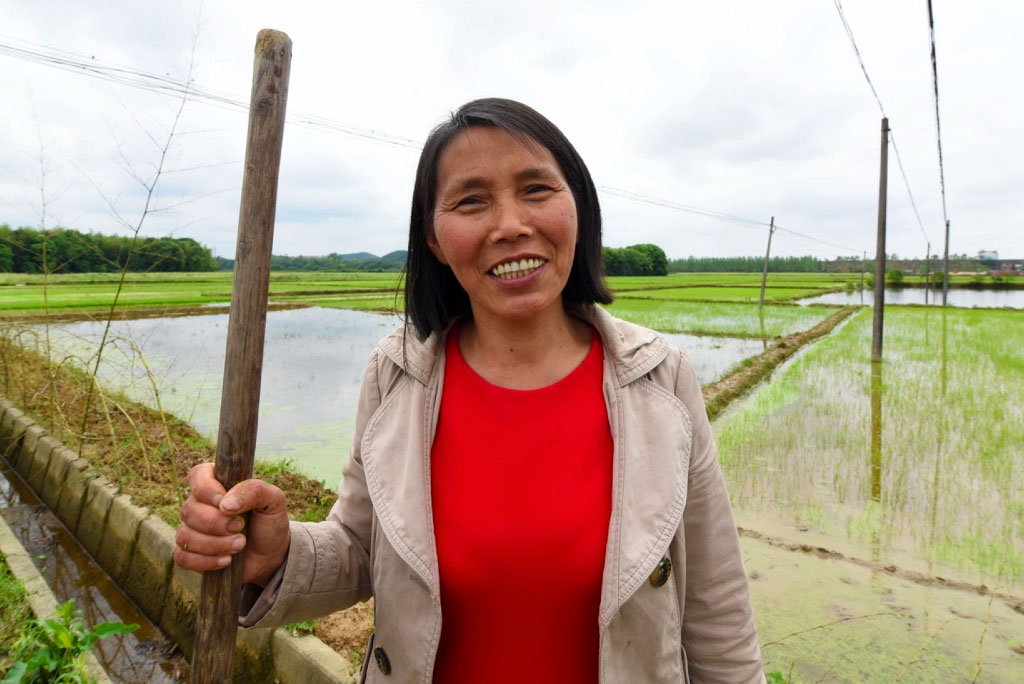East Asia Blog Series
How Did the People’s Republic of China Reduce Poverty in the Countryside?
Shingo Kimura 25 May 2020
Four takeaways from the stunning decrease in poverty in the People’s Republic of China.
Four elements of the poverty reduction strategy of the People’s Republic of China stand out as examples for others to follow.
The People’s Republic of China set 2020 as the year it aims to eradicate absolute poverty nationwide. Rapid economic growth has lifted more than 850 million people out of absolute poverty since the beginning of economic reforms in the late 1970s, contributing to about 70% of worldwide poverty reduction. It has not yet announced final poverty figures for the year, but the official poverty rate had fallen to 1.7% of the rural population by 2018. The country’s achievement in poverty eradication must count as one of the most remarkable achievements in modern history.
The country has placed agriculture, farmers, and rural areas (three nong) at the core of its policy agenda to achieve the goal of a moderately prosperous society (xiao kang). Comprehensive rural development policy has supported remarkable growth in agricultural productivity and boosted off-farm income, which now accounts for more than 70% of rural household income.
Four features of rural development in the People’s Republic of China provide particularly important lessons for developing countries in Asia.
Flexible policies: The government adjusted rural development policy strategies to fit rapidly evolving socio-economic situations. For example, the No.1 Central Document has been annually updating the policy priority for rural development for each of the last 14 years. The initial policy reform in the late 1970s focused on boosting food production and maintaining grain self-sufficiency. The policy evolved in the mid-1990s to increase competitiveness of the rural economy through agricultural modernization and diversification of economic activities. Since the 2010’s, rural policy has shifted to a more integrated and balanced approach to improve economic, social and environmental welfare in rural areas. Support to agriculture was also gradually refocused from maintaining grain self-sufficiency to ensuring long-term food security through sustainable use of natural resources.
Innovative institutions. Innovations were introduced in rural land use and the reorganization of small-scale farms. A Household Responsibility System that originated in the late 1970s allocated land contract rights to individual households. This initial reform boosted agriculture production in the early 1980s, but created a small and fragmented farm structure. Since the 2000s, a variety of institutional innovations consolidated small scale operations into larger units. The holders of land contract rights were allowed to lease out their land operational rights.
The emergence of farm mechanization service providers enabled small-scale farmers to quickly mechanize their cultivation activities without heavy capital investment. Mechanization reduced labor input for farming and increased time available for engaging in off-farm income opportunities. Voluntary cooperative organizations provided a range of services to connect small-scale farmers to markets and the latest technologies through training, and collective marketing and inputs supply. Some co-operative organizations consolidated land operational rights from the member farmers to form a single farm management unit. All these institutional innovations are highly relevant for other countries with a small and fragmented farm structure.
Infrastructure investments. Network infrastructure investments in rural areas included roads, the telephone system, and internet on top of developing basic agricultural infrastructure such as irrigation and drainage. It connected farmers to markets and enabled manufacturing and service industries to develop in rural areas. High penetration of internet and mobile networks in rural areas accelerated the application of information and communications technology. E-commerce platforms such as Taobao have been essential in connecting farmers to end-consumers and oriented agriculture to be more demand-driven.
E-commerce has played a significant role in maintaining food supply chains during the COVID-19 pandemic. Beyond providing a platform for transactions, e-commerce platforms invested in logistics and marketing infrastructure and provided training for farmers to adopt new technologies. Growing engagement of tech companies in rural development is providing a new model of development led by the private sector.
Strong social protection. Rural health insurance and pensions have improved since the early 2000s to help bridge the gap with the urban social protection system. A rural minimum basic living guarantee (Dibao) provides an unconditional cash transfer to the poor (6.2% of the rural population as of April 2019). An expanded social protection system has improved the quality of life in rural areas, and assisted aged farmers to retire and transfer their farm assets to more efficient operators.
Despite remarkable progress in rural development, the People’s Republic of China still faces challenges. The per capita income of urban households remains more than 2.5 times that of rural households. The rural population continues to decline and is set to age rapidly. The expansion of agricultural production has been driven by intensive use of chemicals. Economic growth in rural areas can no longer be achieved at the expense of sustainable use of natural resources and requires more resilience to climate change.
Going forward, enhancing environmental welfare is key for rural areas to be attractive places to live, visit, and launch entrepreneurial activities. To that end, more investment is needed in rural environmental infrastructure, such as waste management, landscape and eco-tourism facilities. Public and private sectors can work together to make better use of underutilized rural resources including organic waste and by-products to generate new economic activity and improve environmental management. With continuing reforms, the People’s Republic of China is positioned to play a leading role in establishing a model of sustainable rural development in Asia and the Pacific.
Author

Shingo Kimura
Senior Natural Resources and Agriculture Specialist, Environment, Natural Resources and Agriculture Division, East Asia Department, ADB


